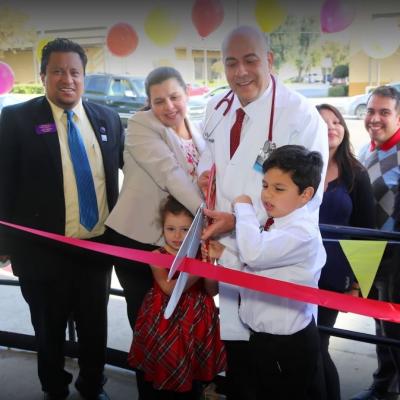Autism Diagnosis and Treatment Delays Increased During the Pandemic.
Though research shows early treatment of autism is critical for long-term development, Wylie James Prescott, 3, had to wait almost a year after being diagnosed with autism.
His mother, Brandie Kurtz, said Georgia's Medicaid program only recently approved his therapy. The frustration is compounded for Kurtz, who works in a doctor's office near her home in rural Wrens, Georgia.
Parents of children with autism, a severe and lifelong illness, know those frustrations well. And the pandemic has made accessing services much more difficult.
This comes as public awareness of autism and research grows, and treatment insurance coverage spreads. Medicaid coverage for a frequently used autism therapy ended in February in Texas. And now all states require private health insurers to cover applied behavior analysis therapy.
From Georgia to California, children frequently have to wait months, if not years, to be diagnosed and treated. Family health insurance policies that cost $40,000 or more per year are out of reach for many families. Minority children and those living in rural areas may encounter additional challenges.
This would never be tolerated by a child with cancer, said Dr. Kristin Sohl, a pediatrician at University of Missouri Health Care and head of the Council on Children with Disabilities' Autism Subcommittee.
Fearing infection, several families discontinued in-home services early in the COVID-19 outbreak. A lot of virtual therapy didn't work, especially for nonverbal and young kids. With fewer clientele, several providers cut personnel or close.
And low-wage workers providing direct in-home autism care always have high turnover rates. But COVID exacerbated the shortage. Companies now have to compete with growing wages.
Autism affects 1 in every 44 children in the United States, according to the CDC. An autism spectrum disorder (ASD) is a group of related developmental and psychiatric disorders that have common symptoms.
Autism diagnosis early can help, Sohl says. Symptoms can be considerably lessened in children who start therapy at 2 or 3.
In most cases, diagnoses are made by developmental-behavioral pediatricians who are in limited supply. Acute scarcity of developmental pediatricians. They make less than general pediatricians despite having three more years of fellowship training.
While trained general pediatricians can perform assessments, insurers frequently require a specialist diagnosis, causing a bottleneck for families.
We risk failure if we only rely on specialists, because there aren't enough of us. "We need insurance companies on board," said Dr. Sharief Taraman, a pediatric neurologist and head of the American Academy of Pediatrics Orange County branch.
Even in big cities, getting a child seen can take months. "We can't bring these folks in fast enough," said Dr. Alan Weintraub of Atlanta's suburbs. It's tragic.
Some parents pay for a private specialist evaluation, increasing the gap between youngsters whose parents can afford it and those who can't.
The wait for autism therapy, including applied behavior analysis, can be as long as a child's autism diagnosis. These sessions can extend over a year and over 20 hours each week. Some criticize ABA, however the American Academy of Pediatrics claims it is the foundation of most evidence-based autism treatment methods.
Access to such care is heavily reliant on insurance coverage, including for many families, Medicaid. Georgia's Medicaid program reimburses adequately for ABA, but Missouri's pay is modest, limiting possibilities, Sohl says.
Wait times for ABA in California range from three to twelve months, depending on jurisdiction. Some families wait years in the state's rural north, where few physicians work.
Read the Original Article At,










 And then Add to Home Screen.
And then Add to Home Screen.